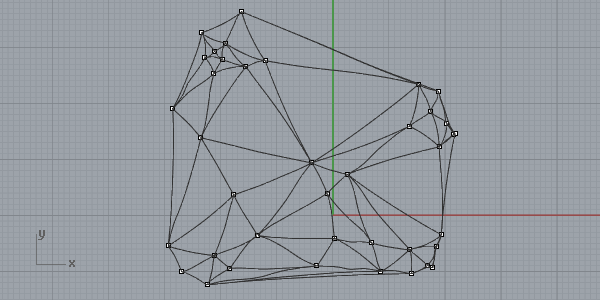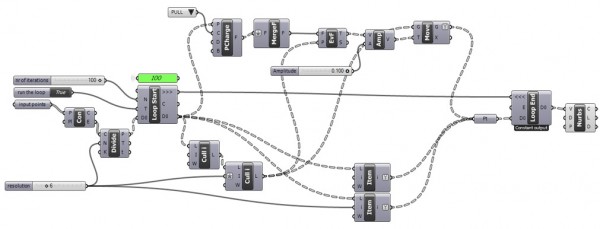Edge Bundling
I’ve been searching for a way to implement edge bundling on Grasshopper. It is an effective visualization technique that you can use in connectivity diagrams. There are a couple of different approaches to this problem. It is a nice way to analyze common paths within crowded graphs. I’ve found several entries in the Grasshopper blog about this subject, but only implementing Kangaroo seemed to be a complete solution. My approach is of course not a scientific one, but after the application of Anemone, it is now possible to model such iterative processes without Kangaroo. Below is my first try. Just input some points (or just the edges if you like) then start the Anemone loop by clicking on the boolean trigger. For the first time, it is so simple to implement force fields within for loops in Grasshopper.
We can shorten the definition a bit. It is possible to define if the graph pushes or pulls itself. Be careful about the bounding box of the calculation process (the B parameter of pCharge component). Otherwise, your edges may not be calculated. This definition could be advanced to include various charge values for each point if you like. However, it was a nice introduction to the “loops” in Grasshopper, which seems to be very important for the future of dataflow design computing.

You can rebuild the definition by looking at the diagram above. Note that it requires Anemone components to run. However, if you want to support this website by downloading my Grasshopper file; would you consider being my Patreon? Here is the link to my Patreon page including the working Grasshopper files for the Edge Bundling and more.









